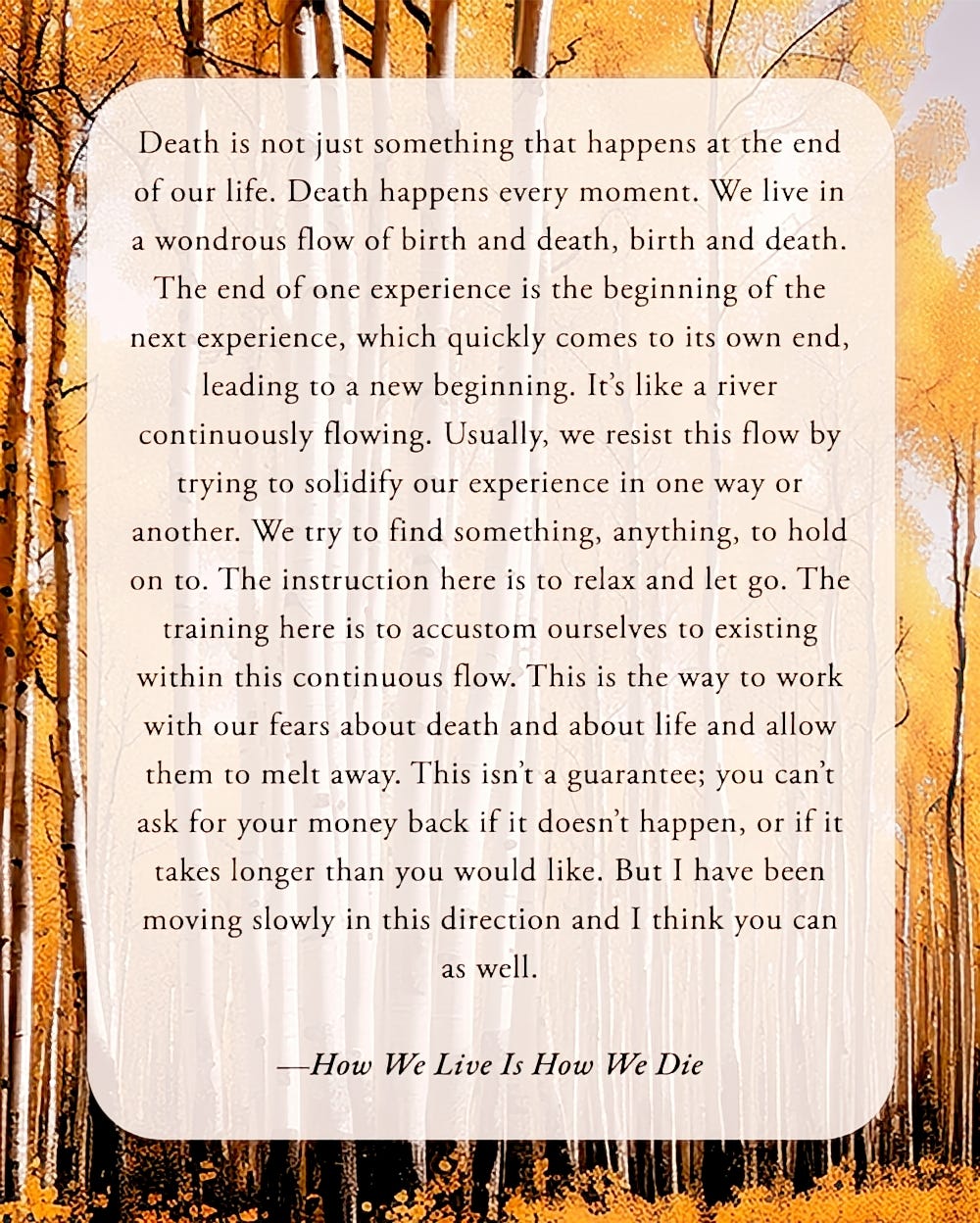From the Pure Land is two months old. I’ve wandered into political and social issues lately, so this is my return to basics. Let’s review why I’m writing these posts and, presumably, why you’re reading them. Maybe that’s a good idea from time to time.
I have no credentials as a Buddhist teacher nor as an expert in anything except clear nonfiction writing—a craft I’ve been developing for almost 60 years—and in my 40-year spiritual journey. I pulled back from writing until two months ago, when meditating in guru yoga, either Buddha Amitabha told me something, or my inner archetype of Buddha Amitabha expressed it, or I had an idea. Pick which version you believe. I believe them all. Here’s what I heard, or a better verb is felt:
Hey, Mel, you could be doing more to manifest your bodhicitta. You’re a writer, and you have experience as a blogger. Start a blog to spread what you have learned.
Bodhicitta is a Sanskrit word that translates to “mind of enlightenment,” but as generally used, it refers to the deep need to help all beings reduce their suffering through the teachings of Buddhism. For me, that means writing honestly from the heart, hoping that my messages reduce suffering whether readers follow a Buddhist path or not. You don’t have to be a Buddhist to be enlightened, or to become a buddha.
What’s the path?
First, please understand that whatever path you’re on at this moment is the right one for you. The Buddha’s teachings begin with the Four Noble Truths:
Dukkha. The word is often translated as suffering, but it’s more explicitly suffering from dissatisfaction, from an empty feeling. We humans are never satisfied. The world won’t give us what we want, or what we think we want.
Samudaya. Our feeling of dissatisfaction has an origin, which is within us. We crave some things and disdain others in the mistaken belief that more of this and less of that will make us happy. Getting a raise may seem like happiness, but the feeling fades, and we crave the next raise. Ending a bad relationship brings a sense of relief—but only for a while, and then we search for the next one.
Nirodha. The word means cessation. We can be liberated from our dissatisfaction.
Magga. Here’s the path out of samsara, the cycle of unhappiness and relief from unhappiness that never leads us to complete satisfaction. It’s called the Eightfold Path, but it’s easiest to think of it in three not-necessarily-consecutive stages: viewing the world as it really is, practicing meditation, reflection, and self-exploration, and living ethically and compassionately.
None of this means we can live in this world without pain. Learning to accept that will free us from misery.
Guideposts along the way
One core belief that helps orient us is the knowledge of impermanence. Everything that has a start also has a finish. Here’s a quote from Pema Chodron about life and death:
Another core belief is anatta. Although it’s usually translated as non-self, it’s more nuanced than that. It means we mistakenly try to find a base in the world by identifying the swirl of thoughts, sensations, emotions, perceptions, and concepts we experience as our “self.” Just as our bodies are not the same from moment to moment, that swirl changes from moment to moment.
In Buddhism, one hears much about causes and conditions, or karma. It’s the simple recognition that everything we do, say, or think impacts ourselves and all beings, and everything that happens results from that collective karma—what we and others have done, said, or thought. Discussion of karma leads inevitably to the subject of rebirth. Do we all believe in reincarnation and carrying a bundle of karma from life to life? For many in the West, it’s easy to understand that every moment is a rebirth, as Pema Chodron writes in the above quotation.
Is meditation necessary to follow the teachings of Buddhism? In a word, yes. In a few more words, let’s clarify what we mean.
When you hear “meditation,” what comes to mind? I suspect most would think of a person sitting still, perhaps in a lotus position, with eyes closed and either concentrating on something or trying to concentrate on nothing. That’s a form of meditation. More broadly, I define meditation as “resting in awareness.” Some speak of mindfulness, but I prefer awareness.
The point is to spend time in quiet contemplation to improve one’s awareness of the world, especially the workings of one’s mind. If sitting still is uncomfortable, walk with awareness of your motions and your surroundings. Dance with awareness. Smell flowers with awareness. Rest your contemplative (bada bada yada yada) mind to get closer to your innate wisdom and compassion. This is one area where a teacher is beneficial. (One route to consider is the Tergar International Joy of Living program.)
Finally, let’s address the middle way. In his original teachings, the Buddha emphasized the path between the extremes of asceticism and indulgence. Later, as Buddhist philosophy developed, Nagarjuna wrote of another middle way—between self and non-self, between form and emptiness. His ideas are too complex for a post on basics, but they helped me when I was ready for them.
Returning to That Pure Land
I stopped blogging five years ago because I didn’t think I had anything unique to say that the world needed to hear, and I no longer needed the ego gratification of being read. I began again when Buddha Amitabha and I decided that I did have something worth sharing. I had learned that I already live in a Pure Land and could invite others to join me there. I wrote about it here:
The point simply is this:
Mind creates reality. If I deeply believe that I live in a Pure Land, I do.
It takes time and practice. I wrote about my formula here:
It doesn’t need to take you the same number of decades it took me. I hope that From the Pure Land enhances your journey.
From the Pure Land is read by subscribers in 22 US states and nine countries.
If you have found this blog post helpful, whatever your religious path, please share it with your friends.
Free and paid subscribers receive all of the usual From the Pure Land posts. If you find value in my work and can afford $5 a month or $50 a year, choose the paid option. You will also receive occasional extended essays on more varied subjects.







